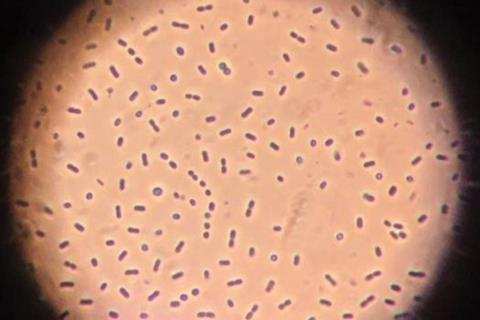Methanotrophs—organisms that grow by consuming methane—seem to be perfect for alleviating global warming, since methane accounts for about 30% of this effect. However, drilling sites, where the natural gas is mostly composed of methane, also contains hydrogen sulphide (H2S), which inhibits the growth of methanotrophs.

In a new study, researchers at the University of Illinois have discovered that the methanotroph Methylococcus capsulatus Bath has an enzyme that helps it grow in the presence of small amounts of H2S.
“Hydrogen sulphide is a major problem in oil and gas industries. If we are to develop biological solutions for addressing methane emissions, then we need to understand how methanotrophs respond to hydrogen sulphide,” said Christopher Rao, a professor of chemical and biomolecular engineering. “This study is one of the first investigations of how methanotrophs reprogram their metabolism in response to H2S.”
“Methanotrophs are the main methane sinks in nature since they use methane as their carbon source, unlike other bacteria, such as Escherichia coli, that use glucose,” said Sichong Pei, a former graduate student in the Rao and Mackie (MME) labs, and the first author of the paper. “By studying methanotrophs, we can understand and then engineer them to increase their methane consumption and help mitigate the greenhouse effects of methane.”
Animal feed fuel
M. capsulatus Bath is currently used for commercial purposes where they are fed pure methane to make single cell proteins that are used in animal feed. Although the bacteria have been studied extensively for this purpose, it is unclear how M. capsulatus Bath performs on natural gas, which, in addition to methane, also contains carbon dioxide, nitrogen, and H2S.
“H2S is so toxic and corrosive that the petrochemical industry has to remove it from natural gas, in a step called ‘sweetening’,” Pei said. “However, we know that there are methanotrophs that live in hot springs, which have high concentrations of methane and H2S. These bacteria must have a natural resistance to sulphur compounds, which means that using these bacteria cuts out the sweetening process and saves money.”
Although other researchers have studied the inhibitory effects of H2S on M. capsulatus Bath, they only used physiological tests where they measured the growth rate of bacteria in the presence of the gas. In the current study, the group looked at transcription—the process by which cells use DNA to make messenger RNA—in the cell to further investigate the effects of H2S on the metabolism of these bacteria.
First, the researchers used different concentrations of H2S to see what concentrations were inhibitory. Although M. capsulatus Bath could grow with 0.1% H2S, the growth rate decreased at 0.5% and 0.75% concentrations, and they were completely inhibited at 1% H2S. “We were trying to find the sweet spot where the bacteria could tolerate H2S, without it being too stressful,” Pei said.
Making the switch
The researchers then grew the bacteria with different concentrations of H2S, including 0%, 0.1%, 0.5%, and 0.75%, and looked at the changes in RNA and small molecule levels. They found that at 0.75% H2S the bacteria switch from using the calcium dependent methanol dehydrogenase mxaF to the lanthanide-dependent methanol dehydrogenase xoxF.
“These bacteria grow on methane by first converting it to methanol, which is then converted to formaldehyde with the help of the enzyme methanol dehydrogenase,” Pei said. “The gene xoxF was identified a decade ago and it uses the element lanthanide. We saw that the transcription of xoxF increased fivefold compared to mxaF.”
Lanthanide is generally found in very low concentrations in nature—usually in the micromolar range. The question, then, is why would bacteria depend on an enzyme that uses lanthanide?
“Three billion years ago, the Earth’s atmosphere mainly contained methane and H2S. It is likely that the ancient microorganisms contained enzymes that were accustomed to these harsh conditions. One hypothesis is that the bacteria inherited the xoxF gene, which produces this relatively ancient enzyme, allowing them to function under sulfide-rich conditions.”
Although these bacteria have xoxF, they primarily depend on mxaF because it is more efficient. However, the researchers showed that when these bacteria are exposed to sulfide, they switch to using xoxF. “Previously, this switch was only seen when researchers added lanthanide,” Pei said. “I believe that there is an intriguing mechanism behind the switch and this is just one piece of the puzzle.”
The study “Systems analysis of the effect of hydrogen sulfide on the growth of Methylococcus capsulatus Bath” was published in Applied Microbial and Cell Physiology and was funded by Shell International Exploration and Production, Inc.







No comments yet